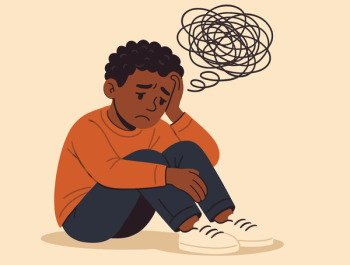
Universities’ Response to Supporting Mental Health of College Students During the COVID-19 Pandemic
College students are uniquely vulnerable to both everyday stressors and severe mental illness, and psychiatric symptoms among college students appear to be on the rise.
Public health emergencies may present a range of unanticipated potential stressors to vulnerable patients and communities. Psychiatric patients can be disproportionately affected by these conditions due to pre-existing health disparities, lack of resources, or limited executive functioning under stress, all of which may impede effective responses during an emergency. As college students comprise a demographic with a growing burden of mental illness, public health emergencies pose special challenges to this population.
These psychiatric symptoms can have a widespread effect on the overall health of students as mental health conditions and viral diseases remain linked by a range of biological and behavioral pathways, with mechanisms varying by viral illness.5 While depression and stress may increase vulnerability to
The current public health emergency in response to
Many universities have extended spring breaks to delay the return of students to campus so campus leadership can have more time to prepare for a potential health care crisis and implement infection precautions. Other universities have cancelled all events, shifted to online classes, or ended their semester early. Many students have been mandated to vacate their dormitories with only a few days’ notice.
Dormitory evacuation is a stressful scenario for college students. International students may not be able to return home. Students from families with financial stressors, marginal housing, or other challenges that limit their capacity for support may have disproportionate difficulty arranging last-minute transportation and housing. Food insecurity, a significant problem affecting students with limited financial resources, may worsen if college cafeterias close or financial aid for the academic year is cut off.8-10 As local businesses close, it will be more difficult for students to find low-wage jobs to earn income. At home, some students do not have the technological infrastructure to be able to keep up with online classes and engage with their now-virtual social communities, leading to academic stress and further social isolation. The few students who are granted exceptions to the evacuation mandate will be isolated in otherwise vacant campus dormitories with significantly limited services.
Other students may be quarantined due to perceived risk of spreading the virus. These students may lose opportunities critical to their scholarly or professional advancement. The social isolation and decreased activity during quarantine may exacerbate rumination and feelings of hopelessness. The circumstances could understandably perpetuate stress, anxiety, and low mood.
Even students not under quarantine and from well-resourced families are stressed about the rapidly changing and uncertain climate of relocations, academic deadline changes, shifts to online teaching modalities, and cancellation of anticipated events such as graduation ceremonies. In a population that is already vulnerable to mental health problems (eg, anxiety, depression) and is simultaneously experiencing a potentially traumatic public health crisis, these stressors may lead to clinically significant psychiatric symptoms and illness. This is compounded by the social isolation intrinsic to many of the containment efforts as well as the potential stigma and limitations of accessing psychiatric care at home and having to switch from typical sources of on-campus support.
College mental health services must swiftly respond to this changing landscape to support their students during this stressful and potentially isolating experience. Many are attempting to rapidly shift to virtual visits and other forms of
New York Governor
The
Massachusetts Governor
Requirements that clinicians have a license to practice in the state where the patient physically resides is a significant barrier for college students continuing mental health treatment after their campus evacuation. Many students may stay with family members in a state different from their university and be left unable to receive services from on-campus mental health providers.
Some universities who had implemented a telemental health platform in a limited capacity prior to the pandemic were often able to more rapidly roll out online resources with relative ease. For example,
Less conventional communication modalities may create access for students who are juggling logistical challenges and find it difficult to regularly attend in-person appointments during a relocation or quarantine. Many clinicians have expanded their use of telephone appointments as hurdles related to both privacy and billing have been gradually addressed (Melissa Eshelman, MD, personal communication, March 16, 2020).
Some universities are inviting students within driving distance to attend in-person appointments although students are encouraged to reschedule or use telehealth if they are medically symptomatic. A few psychiatrists, who are seeing patients in-person, have relocated to larger offices to maintain social distancing during sessions (Melissa Eshelman, MD, personal communication, March 16, 2020). However, as the pandemic expands, many such as The Ohio State University are transitioning to solely telehealth appointments and encouraging staff to work from home as much as possible.
As mental health clinicians provide services with more flexibility, psychiatrists are reducing barriers as well. Programs that had previously enforced policies regarding providing medication refills only during in-person appointments have liberalized their stance to include prescribing refills based on a phone encounter, allocating more refills, or providing 90-day rather than 30-day prescriptions. Many college mental health clinics are implementing practices typically utilized at the end of the semester in preparation for potential coverage gaps during summer break.
Some Intensive Outpatient Programs (IOPs) and Partial Hospitalization Programs (PHPs) are transitioning to telemental health delivery while others have stopped accepting new patients. IOPs and PHP are important levels of care for our system to both limit psychiatric hospitalizations and facilitate safer discharges from psychiatric hospitals. As these programs care for the highest-risk patients outside of psychiatric hospitalizations, it is crucial to develop innovative ways to deliver these services.
Anticipated clinician shortages across the entire health care system may affect university mental health clinics as well as clinicians, as family members are quarantined and schools and childcare centers close. While many programs hope to facilitate telehealth appointments that can be utilized from clinicians’ homes, if resource scarcity and clinician shortages become severe, it may be necessary to triage urgent appointments while minimizing routine follow-up.
College students are psychiatrically vulnerable, psychiatric patients are physically vulnerable, and the current circumstances on college campuses are exceedingly stressful and potentially socially isolating. Given these factors, college students are likely at an elevated psychiatric risk right now, and college mental health services must adapt to support their students during these circumstances. Continued enactment of legislation and regulatory changes that facilitates telemental health and allow treatment across state lines is critical to ensuring adequate mental health treatment access for college students during this pandemic.
Disclosures:
Dr Conrad is a Fellow at Harvard Medical School; Ms Rayala is an MD Candidate at the University of Michigan Medical School; Dr Menon is a Senior Staff Psychiatrist at The Ohio State University and Co-Chair of the American Psychiatric Association Caucus on College Mental Health; Ms Vora is an MD Candidate, Harvard Medical School. The authors report no conflicts of interest concerning the subject matter of this article.
References:
1. Lattie EG, Lipson SK, Eisenberg D.
2. Lipson SK, Lattie EG, Eisenberg D.
3. Xiao H, Carney DM., Youn SJ, et al.
4. Centers for Disease Control and Prevention National Center for Health Statistics. 2019.
5. Coughlin SS.
6. Prince M, Patel V, Saxena S, et al.
7. De Hert M, Correll CU, Bobes J, et al.
8. Nazmi A, Martinez S, Byrd A, et al.
9. Food Insecurity:
10. Higher Education:
11. Commonwealth of Massachusetts Office of the Governor.
12. Commonwealth of Massachusetts Office of the Governor.
Newsletter
Receive trusted psychiatric news, expert analysis, and clinical insights — subscribe today to support your practice and your patients.














